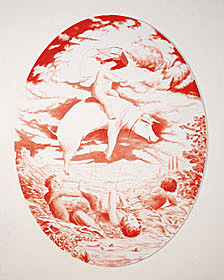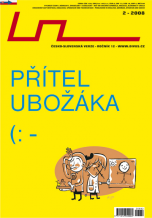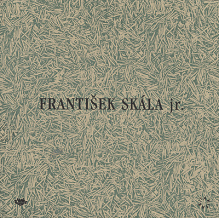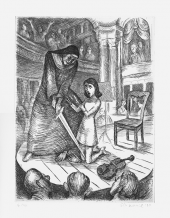| Umělec magazine 2001/3 >> A Hunter`s Paraphrase | List of all editions. | ||||||||||||
|
|||||||||||||
A Hunter`s ParaphraseUmělec magazine 2001/301.03.2001 Ursula Panhans-Bühler | exhibition | en cs |
|||||||||||||
|
"Bambi’s story is well known, but his
origins less so. In the 1920s, Austrian writer Felix Salten not only wrote the educational romance about an earnest young fawn, a loving mother doe and an authoritarian father buck, but he also penned the lascivious story of Josephine, a Vien-nese prostitute. The story was written in such a way that we cannot be asolutely sure if real or only literary entanglements existed between Salten and Josephine. Bambi, meanwhile, went on to be so successful that in the 1940s Walt Disney made a cartoon version that reached every child’s imagination. In France, 1939, Jean de Brunhoff turned an educational romance into a comic strip, but he didn’t stop at the boundaries of natural wildlife. He fully integrated his own hero, an elephant named Babar, into the civilized world of material and abstract signifiers such as clothes, human behaviors, mathematics and writing, while preserving Babar’s natural animal-body self. So the barbaric wild animal was transformed into a clumsy anthropomorphic biped with a snout as impressive as a knee-length necktie. Now if we consider Vladimir Nabokov’s mirror-in-time prophecy that “the future is the past in reverse,” we find we get caught in the present as in a passive reflecting zone, a vacuum, urged on to the future by the fear of what could happen now. Bambi wasn’t pushed out of his world, his burnt-down woods, forever: Nature has the capacity to forget, and so the woods grew anew the following spring. In former times our biblical ancestors didn’t spoil the gardens of paradise: An angel simply closed the door with fire and sword, and the gardens, abandoned, grow on. The world of the real fell silent in the last century when representation became a system of signs referring only to one another, turning like closed circuits on their own saturnian rings. In an updated version of Bambi we certainly wouldn’t eliminate the burning woods. But if his mother is to be shot by hunters, as she is in Disney’s version, this time the fire would in all probability be accidental. An eager hunter mistakenly lights a branch instead of a cigarette, and now everyone flees in panic: Bambi and his animal companions, the stags and the wild pigs, ravens and owls, moles and mice, and all the deer hunters too... All alone, Bambi drops down at the edge of the woods. An exhausted hunter suddenly stumbles past him, trips over a root, falls down. As he picks himself up, a small book slips from his pocket. The hunter fails to notice and soon crawls off into the underbrush. Not knowing what else to do, Bambi picks up the dropped volume, and is amazed. He recognizes a stout deer with marvelous antlers on the cover and another fleeing on the back. Both are too small to be his relatives — strange Lilliputian deer. Inside the book looks stuffed with peculiar dark flies, wingless, chasing in straight lines across the paper. The book is absolutely packed with them, a frozen flea storm on white sheets. Fortunately Babar comes along just then, on a different path from the one the wheezing hunters took. He flops down next to Bambi and takes the book from him. “Ah, Deer Hunting: A Practical and Metaphorical Primer for Hunting Addicts,” Babar exclaims. He’s just finished a sophisticated education and he now happily quotes from the ABC-darium. “Art Market: a stock exchange for all sorts of antlers. Boom: prosperity for the internationally recommended art of contemporary Western globalization. Critic: linguistic camouflage for the barren conveyance of ideas. Deer popular theme in the arts (in all disciplines since antiquity) and in crafts (hunting and photography). Eagle: sometimes a symbolic concurrent of the deer, always of the hunter. Freiscutz: the hunter with the devil’s bullets from the romantic opera Carl Maria v. Weber. Guardian: in former times the most expert keeper of any collection, today at the bottom of the hierarchy. High and Low: a back-and-forth quarrel for inspiration, sometimes at loggerheads, but sometimes a sort of machination against official cultural standards. Inside the white cube: hunting zone. Jump: High jump, “Hirschsprung” over “Hollental,” Black Forest. Kermis: an annual celebration of the church with an additional marketplace, see Technology, Fashion or Art Fairs. Luxury Hunters: the actual art community. Museum: lost property office for bourgeois society. Non-site: the location of art. Oil-painted Sunset with Deer: famous motif of melancholy from the 19th century, see Courbet. Political Correctness: a new censorship in art, mostly iconographic. Quarry: a successful hunt. Representational Art: a representation always represents a representation of a representation and so on — mise en abîme. Schlafzimmerbilder: famous cheap oil prints from the turn of the 19th century, located above the nuptial bed (which have today been replaced by a television screen near the floor), often depicting a bellowing deer, to call to life what should happen under the blankets. Turn, the Linguistic T.: an actual self-referential system, sometimes shifted to satiric tomfoolery. Un-fair: an attempt some years ago to throw fresh fish into the market in Cologne. Value: distinguished art veneration. Wannabe Artists: the echoes of a wannabe culture. X-ray: the apparatus for checking painted layers to unmask any forgers attempting to confuse the succession of periods. Youth: the older the deer, the younger the antlers should rest (in art). Zero: the actual effect of art on society (while the effect on art by society is total).” “Ugh,” utters Bambi. “What an exhausting double life. Till now I only knew hunters from my home woods, but, you know, they didn’t take care of it.” And with a doubtful glance at Babar, he remarks, “Maybe your world is not so different from mine.” “Well,” replies Babar, “there are certain ambiguities which may correspond well to yours.” And with a solemn gesture of his hands he scratches his snout. “But if you like, I could introduce you to some of my modes of reality.” “That’s a good idea,” says Bambi. “Let’s start with what it said in the book.” Even though Bambi fears the hunters, he still hopes to find his father and other relatives. “Well, let’s go then,” says Babar, and thrusts his enormous hands deep into the pockets of his jacket. When they arrive at the exhibition space, they see a deer head with gilt-shiny antlers mounted over the entrance. “Art Fair!” exclaims Bambi. “I remember that from the ABC-darium. There must be hunters here.” He is also thinking about his loved ones. Inside, distinguished people stroll casually like moving scenery among the fashionable furnishings, large canvases on tastefully painted walls, advertisements and small corporate identity logos. The people look bored, but struggle to evince faint interest anyway. “What a smell!” exclaims Bambi, sniffing the air with his nose raised. “Don’t shout,” whispers Babar. “It’s the perfume most people use here. Very exclusive. A refined glandular musk extract called Revenue.” “Re-venue? So who’s coming back?” But Babar refrains from answering. “Let’s have a look at some of the other booths,” he proposes. “Oh, more books,” says Bambi reverentially. “Why are they so flat?” “Those are not real books; they’re painted books.” “So you can’t read them?” “No, you can only read what is written on the surfaces. Try it if you want.” Babar encourages him, and he reads, “L.a.n.g.u.a.g.e a.s E.x.i.l.e o.f B.e.i.n.g, L.a.n.g.u.a.g.e a.s t.h.e L.o.c.a.t.i.o.n o.f E.r.r.o.r, H.o.w t.o B.e.c.o.m.e a.n A.r.t A.d.d.i.c.t... but what does this mean?” Bambi asks. “Nothing special,” replies Babar. “Only that you are in the world of representations.” “Of what?” “Of representations of representations. Written books as painted images...” “So nothing’s real?” “Well, there might be reference points,” Babar adds dreamily, pushing Bambi on. They pass several large canvases where Bambi rubs his eyes. “Dumb Paintings,” Babar comments. “Maybe after an accident on Photoshop.” “What does this one have over his eyes?” Bambi wonders, looking at the cluster of frolicking cherubs in another painting. “Well, that’s a virtual reality helmet. With one of those you can look into another world. It’s a painted joke. It’s called Deconstructed Innovation. You can float around free of gravity,” he adds, proudly poking his heavy body. “So then I could go back to my woods?” Bambi asks. “Yes... But not really, only virtually,” Babar replies. “Look at these waterfalls, but why are they so mute? In my woods they drown out even the majestic bellowing of my father,” Bambi says, trying to compensate for his naivete. “Look,” Babar patiently explains, “paintings belong to the realm of the two- dimensional. If bodily volumes don’t exist, where would a voice come from? By the way, it’s practical too. Imagine what would happen if all these falling waters flooded the elegant interiors!” Bambi is now beginning to feel more and more embarrassed. They come to another stand of mirror paintings. Back in the woods he remembers seeing does reflected in clear pond water, silent and hazy. “Painted mirrors are a kind of obtrusive mirroring...” says Babar, trying to help out the stupefied Bambi, who still expects to see his comrades come bursting through the mirrors. “Hello,” Bambi says to one of the portraits on the walls in another niche. “Paintings of the richest and most famous men from all over the world. Moguls painted after the painter’s cousin’s collection of newspaper reproductions,” answers Babar, and not the pictures, to Bambi’s surprise. “Do they get bigger if they are reproduced?” “Sure, in a way,” Babar muses. Later, in the next room, standing in front of paintings of children’s abstract drawings, Bambi exclaims, “I made scribbles like these in wintertime in the snow with my hoof!” “The painter made them after his little daughter’s drawings.” “Well that’s not original,” Bambi sighs despairingly. A gallery assistant glides by with a silver tray of drinks. “Anything to drink?” proposes Babar. “Champagne or Jägermeister?” Glasses in hand, they move on through the exhibition space. There are so many things to look at, but nothing to touch or even sit on. “No, no, don’t touch them,” the assistant requests. “They’re for sale. After being handled they wouldn’t have the same value, which will keep increasing with a little luck. Would you like to see a price list?” But the pair have already gone around the corner into the last room. “Oh, deer!” gasps Bambi, gaping openly at a large paintings of stately stags. But Babar is slightly annoyed. He is longing to see his favorite representation of Apollon of Belvedere, with his beloved queen Celeste depicted as the hunting Diana. For Babar these paintings are mere reproductions of crude natural beings. But Bambi is looking around, amazed. He experiences the temptation to fly into a painting, wanting to join his father, but he can’t decide which one to go to. He suddenly fears that he will be submerged under the paintings’ flat surfaces. The lessons learned from Babar are also holding him back. “Representations, reproductions of reproductions,” he murmurs firmly to himself under his breath. The impressive elongated and mirrored shadows seem to echo his father’s never-ending cry, longing for him. But not a single deer sends a glance Bambi’s way. Instead, Bambi finds himself enveloped in the defensive gaze of a moufflon standing among the massive trunks of a dark wood that almost covers the surface of the painting. “You know, they will never penetrate my woods. I am able to banish their silly voyeurism with my mussel-shaped eyes; I multiply my trees and unfold them, so they can’t be penetrated.” “But they will just steal your world.” Bambi hears the voice, but he’s not sure if it his own or that of the moufflon. “Roll them up and sell them as expensive carpets.” The moufflon stands silent. Babar puts his arm around Bambi’s neck and suggests they leave Messe. “What a lot of painters you’ve got to gather together to fill such an exhibition,” Bambi says, trying to sound the expert. Babar laughs and replies indulgently, “You are right. There are really a lot of painters, a lot of photographers, collectors of reproductions, amateur artists and so on, even the children to provide the models for this exhibition. But this show was actually done by one artist.” Bambi tries not to look shocked. “You think so? But then he’s mocking us?” “Maybe. But maybe he just wanted us to be able to laugh at ourselves. Did you enjoy it?” “I’m not sure. Sometimes I thought it wasn’t only a copy from a representation. I mean, I felt, maybe, that he loves to paint. And what the painting might be referring to...” He stands for a moment, remembering what he’s seen before adding, courageously, “By the way, I learned a lot about representation.” “You are quite right,” Babar agrees. “Any representation is an evocation and negation of what is real, be it outside or inside human animals.” Once more he scratches his snout. “In this case it is even a doubling of a representation. What he really tried to do is an exhibition of an exhibition, to match one evocation or negation against another. You stop a simple mirroring process, prone to idleness and vanity, by doubling it.” This time Bambi feels desperate. They reach the entrance hall. Babar, who enjoys helping his poor miserable friend, suddenly thinks of The Little Prince, the children’s book. At this moment the Little Prince seems to be asking him, “Where is art’s place when it only exists on a negative level?” Where is art’s place? he thinks to himself, and then says to Bambi, “Well, you know, art plays the role of a double negative. You stop an endless vanishing process by mirroring it. There is nothing in-between, but this reflection constructs an in-between place.” To make it easier, he relates some of the Little Prince’s adventures in the adult world. “But the Little Prince is not real?” asks Bambi. “He is fiction from a book?” “Yes,” Babar admits. “A representation, an imaginary person, invented by his author, as we are invented by our authors.” “But why?” “Maybe to help people find out what they are doing. And whether they really want to be doing it. Art sometimes tries to do this too.” “It should try,” Bambi replies. Or could try? Babar tries to imagine how the Little Prince might have phrased it. "
01.03.2001
Recommended articles
|
|||||||||||||
|
04.02.2020 10:17
Letošní 50. ročník Art Basel přilákal celkem 93 000 návštěvníků a sběratelů z 80 zemí světa. 290 prémiových galerií představilo umělecká díla od počátku 20. století až po současnost. Hlavní sektor přehlídky, tradičně v prvním patře výstavního prostoru, představil 232 předních galerií z celého světa nabízející umění nejvyšší kvality. Veletrh ukázal vzestupný trend prodeje prostřednictvím galerií jak soukromým sbírkám, tak i institucím. Kromě hlavního veletrhu stály za návštěvu i ty přidružené: Volta, Liste a Photo Basel, k tomu doprovodné programy a výstavy v místních institucích, které kvalitou daleko přesahují hranice města tj. Kunsthalle Basel, Kunstmuseum, Tinguely muzeum nebo Fondation Beyeler.
|



































 We Are Rising National Gallery For You! Go to Kyjov by Krásná Lípa no.37.
We Are Rising National Gallery For You! Go to Kyjov by Krásná Lípa no.37.
Comments
There are currently no comments.Add new comment